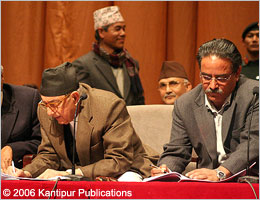 Introduction
Introduction
The first, if we want to deeply study or want to know about photography. We must know their history too.
Now today, we can see photography is very advanced and very important for our life
It helps more Easier to our life and useful for various field like our daily life, Science & technology, space research, news, industries and others .so we must know if how the photography was invent.
Invention
In 1727 AD German physicist john heinrich Schulz working with some kinds of chemicals, like silver and chalk added nitric acid when he doing this on his hands he is near of the window. And there sunlight inter from the window when he rub that solution
On his hands suddenly some part of his hands were black because of his hands was sunlight rays ,
That time Schulz Invent the temporary shadow picture with stencil where that solution are used.
In 1835 William Henry fox Talbot was success to invent of paper negative, he does the patent right of his calotype process in 1841 he paste silver iodide on the paper, that time this kinds of paper needed acetonitrate or, gallonitrate of silver bath.
0n august19th, 1839 in paris, Louis Daguerre had discovered a way to capture the image in the camera obscura by the action of light itself He had developed a suitable light sensitive material which could record an image direct.
Vienna scientist Joseph petzval invent the first time success full lenses. This type
Of lens could be take the photograph with short time one of the astrologist sir William Herschel introduced the word of “photography” for world. Frederic escort archer helps to make wet colodian plate in 1851 AD .this time photographer needed .to make
Plats of own self when they want to take picture .whenever this plats are wet
They should be taken the picture. When these kinds of plats are exposed suddenly
its needed to develop, fix and dry immediately .for the out door photography . Photographer needed dark room too, they use light proof tent for the dark room.
Dry plates are invent on 1870AD in this plate silver Haloed and pure
Transparent gelatin mixture is painted in 1880 AD. George east man introduced commercially. This plats in America. In this time many kinds of quality lenses are invent and. Time many kinds of plats too increased.
It was forty years before photographs began to appear on the printed page. In book, news papers and journals, more before first films and then television, brought motion pictures into our everyday lives. Today we are so existence of photography. Now with out photography, our experience of the world around us would be limited only to what we could see with our own eyes.
CAMERA TECHNIQU
STEP 1 : The simple camera
STEP 2 : Camera control
STEP 3 :Controlling picture sharpness
This first main section introduces you to the basis tools and materials of photography, and establishes fundamental camera handling skills. It draws directly on the principles of image forming and light sensitivity. Starting with the simplest kind of modern camera, it progresses to the popular single lens reflex type. Each camera control is looked at in turn. To see what it contribute to practical picture making. Combining the various controls leads on to choosing film and the measurement and control of exposure.
You need not have a dark room. Or do you own processing, or even have any knowledge of how cameras work, before starting this section. If you are absolute beginner, it is the most important technical part of the book. It explains and establishes all the terms, such as f number, depth of field, and exposure that you will meet regularly in later sections. If you already have some experience with a camera use the section as a refresher course to check your knowledge.
Work through the material page by page, because terms are explained as introduced, and lead on one from another. Don’t limit to your learning to reading. Test out the statements made and tackle some of the assignments. You will find it much more interesting and instructional if you take pictures as you go along. All you need is a camera with a normal lens. Some form of exposure meter, and a reasonable supply of black and white film.
You must expect to use a fair amount of film to begin with as it will take practice to be able to predict your results accurately, you will be making comparison picture , experimenting and inevitably making mistakes. It is important to practice as much as you can , so that you have some practical results for comparison. You will see and remember the points this book is making much better if they appear in your own picture.
Think carefully before composing and making the settings for every shot. What effect are you trying to achieve? Perhaps you are comparing the results of different settings ;or applying a technique to a particular subject or (and this is equally important) breaking the rules to see what visual effect will occur, get into the habit of taking several versions, perhaps making notes so you can remember the settings . Have the films processed and printed promptly, and learn to assess your results critically along with the notes you have made.
Don’t expect perfect results at this stage. Your early efforts will be in the nature of exercises. Concentrate on learning from your mistakes as well as your successes. Keep to simple subjects at first, and avoid difficult lighting conditions such as extreme contrasts between highlights and shadows or dim indoor conditions. Your main aim should be to get comfortable with your camera, and familiar with its controls. Only then can you begin to “work through the camera” and respond freely to your subject matter and lighting conditions.
Arrangement of stepsThe section begins by looking at a cheap simple camera, because this has all the essential controls – lens, shutter and viewfinder in their most basic form. You must still learn to load the film in the same way, and with the same accuracy and speed , as with other more expensive cameras . but simple camera settings for lens and shutter are either fixed , or have a very narrow range . this makes the camera uncomplicated and quick to use.
This very lack of control soon becomes frustrating , however . you will want to be able to work closer to your subject , to take pictures under all sorts of lighting conditions, or to emphasize one part of a picture by making everything else un Sharp. For this you need a wider choice of lens and shutter settings. So the next step moves on to a more elaborate camera which offers much more flexibility- with fully variable lens , aperture and shutter . here the single lens reflex type of 35 mm camera is mainly featured because of it popularity and comparative simplicity.
With a single lens reflex camera , such as a pentax , Nikon , Minolta or canon you can predict the appearance of your photographs with great accuracy , because you view the actual image formed by the taking lens . lenses and accessories which you can build up as your experience of photography grows.
The 35 mm single lens reflex camera is therefore the principle camera used throughout the book. But although most diagrams show this short this camera. The information is valid for other cameras too. If for example you own a larger camera, perhaps a twin lens reflex, or a good non reflex 35 mm camera, you can work through the book just as well. Most of the principles discussed apply equally to all camera types. Where their mechanical or optical arrangements differ, these will be shown.
Reading over this section should enable you to identify all the controls on whatever camera you possess, and see how they each alter your results. The first control is the focusing ring on the lens. As you have already seen on pages 20-1.focusing a lens has a similar effect to focusing the eye . cameras use various devices to show you which parts of the scene are being sharply focused. On some you just set the subject to camera distance on a scale. Others show you a double picture in the view finder .Until the focus is set properly. Best of all are cameras with focusing screens that show you how the image actually looks – which different parts are sharp or un sharp. And what the overall effect will be. The single lens reflex is one such camera.
This section and the next deal only with the “normal” lens aperture .this follows on from focusing . partly because it is often placed right next to the focusing ring on a camera , but mostly because it also affects sharpness in your pictures . the amount of light entering the
Camera .to control aperture , you most get used to a scales of “ f - numbers” , and understand
How different settings will affect the amount of the scene rendered sharp at one focusing
Distance .it helps if you can actually see the effect of altering aperture on your viewing
Screen . here again a single lens reflex camera is the best .
The third control introduced in the shutter . you are probably quite familiar with the control
, because no camera is without it . shutter determines when , and for how long. film is exposed
To light . the speed you select has some interesting effects on the way moving subjects
( or movements of the camera) are recorded in your photographs.
Aperture and shutter together control exposure the total quantity of light given to your film. One alters the amount, or “intensity”. Of light admitted. The other item that light is allowed to act. Many beginners in photography are worried by having to judge correct exposure. But it is surprisingly straightforward, as a rule .modern light-riding meters can be very accurate .and variations from correct settings may still give acceptable result on today’s black and white film. (color film requires greater accuracy ). The important thing is to know how to make readings as quickly and accurately as possible .and what short of visual effects you can achieve by giving deliberate over or underexposure to particular subjects .
The development of camera technologyThis section is also worth studying if you are thinking of buying a camera . it will highlight features that may affect your photography. So you can assess the various models and prices more critically . the general trend is for cameras and the pictures they take to be made steadily smaller. The first popular camera . invented by George Eastman ninety years ago. Took 100 pictures 2/3.4 inch wide . it even had to be returned to the manufacturer .some years later, Thomas Edison, working on an instrument for making movies, used Eastman Kodak roll film slit down the middle – so it became 1/3.8 ins (35mm) wide. He cut perforations down each side for transporting it through the camera and projector. Much later, in 1924, an employee of E.leitze the German microscope manufacturers, designed a little camera for taking still pictures on length of this 35 mm camera the most popular format.
Up until world war 2 however, most family cameras used Rollifilm from box cameras to precision types such as the Rollieiflex. Serious photographers used even larger cameras taking plates (and later sheet film). 35 mm cameras were not very popular, because prints made by contact from the tiny negatives were too small .lens quality was poor unless you bought the most expensive 35mm models. So the “miniature” film was unable to resolve really fine detail .and gave disappointing enlargements .to measure exposure you had to use tables or a meter the size of a modern cassette tape recorder.
During the 1950s and 60s , improvements in lens optics and the production ( mostly in Japan) of precision single lens reflex cameras made the 35mm camera the world’s most versatile and popular design. Improvements in precision optics still continue today’s even smaller , 110 size camera ( using 16mm wide film) will eventually offer all the facilities of 35mm. provided that final prints are of equally good quality , a smaller, handier camera will always have great appeal.
In 1948 the first instant picture camera system was invented .this camera and special film offer the tremendous advantage of allowing you to check results on the spot , and if necessary take the picture again. There are disadvantages, camera size is directly linked to picture size; materials are expensive; and for serious photography , image manipulation is very restricted , particularly since on the majority of systems you do not retain a negative but get a print direct.
Deciding on a cameraChoosing a camera today can be as easy or difficult as choosing a car. What short of work do you want to do with it ? how much can you afford for both the equipment and the materials? Which type and shape of camera design suits you best? If you intend to do a lot of photography you are likely to spend more on film than you spent on the camera. Film 35mm wide in 36 exposure lengths is still cheaper per picture than either roll film or 16 mm wide 110 film . in its convenient but costly drop-in cartridge.
In the 35mm camera range, designs using a separate (non reflex) viewfinder system are cheaper than the mechanically more complex single lens reflex. But look ahead – will you soon want to buy extra lenses or other special attachments? If so, a reflex backed up by a whole system of lenses and accessories would be a better choice .
Having decided the size and type of camera you need, think hard about what you can afford. Cameras are now so competitive that you generally get what you pay for .current catalogs will show three or four different brands at each of several price levels .how will you spend your money – on a really good camera body and normal lens, for additions later ?or on a cheaper model together with several lenses?
Narrow down two or three camera models you can afford, and then actually handle each one of them. If you can , borrow a camera of the model you are considering buying, to make sure it suits you .you must consider features such as size and weight; how easy you find the viewing and focusing the speed and convenience of changing aperture and shutter settings ; even the way the way the camera “ sits ” in your hands .
Most cameras have excellent built – in light meters and these are worth comparing ( see pp. 40-1 ) .you can even buy a camera with a “ fully automatic ” meter , which takes over all exposure decisions on a programmed basis. this efficient and convenient ; but long term it will prove restrictive . you don ‘t know what settings are beings made , and cannot give a selective exposure for a part of a subject , or intentionally over – or underexpose for particular effects perhaps a camera offering the choice of automatic or manual metering is best .you can learn to use the manual settings , creatively exploiting the various side – effects they produce. but you can still switch to automatic for quick shots when a generally correct exposure is all you need.,
Don’t overlook reliability. It is very depressing to find that a whole film has turned out blank, because the shutter stuck, or the film failed to wind on. Often reliability is reflected in price, so it really is worth buying the best camera you can afford. A well known make is a reasonable guarantee of quality.
A thorough understanding of your camera will give you confidence and control when you start work on the important picture making aspects of photography, in the next section. So use this section to make yourself completely familiar with the basic tools of photography, and particularly with your own camera’s range and limitations. The four steps in this section are: the basic camera ; the camera controls ( focusing, aperture, shutter ); controlling picture sharpness ; and measuring exposure. Information or more advanced equipment and accessories is given in the section beginning on page 89, and further details of camera types in the appendix.
STEP 1:
THE SIMPLE CAMERAyou can take good photographs with the simplest of cameras – it need only be a light – tight box with a lens (to select and focus reflected light rays from the subject ) , a shutter (to admit light briefly to the film ) , and a compartment for film . A simple viewing system is helpful , to show you which area of a scene will be recorded . many people start their photography with a simple camera like this – a basic , non – adjustable 35 mm or 110 pocket camera , such as those shown
below . however sophisticated your own camera may be, understanding the components and working of a simple camera is important since it applies the basic optical principles of photography (discussed on pp. 1619 ) in an elementary manner .
most simple cameras have a fixed focus is not variable, the lens being set to give maximum overall sharpness , as explained below . behind the lens, a metal shutter consisting of moveable blades or a rotating disk protects the films from light . when you press the shutter release button on the top of the camera , the blades open , or the disk rotates , and lights falls briefly on the sensitive film surface . the viewing system is usually a tube on top of the camera with a lens at each end . through it , you look directly at the subject , which will appear reduced in size . this view is not exactly that “seen” by the taking lens and this creates a problem at close distance as explained on the opposite page .cameras with this type of viewing are called direct vision viewfinder cameras.















